28 January 2010
Гендерной Программы
Uzbek photographer Umida Akhmedova was arrested in Tashkent last month, after police claimed that her photographs insulted Uzbekistan. She has directed several controversial documentaries, though the formal charges relate to a book of her photos, titled Гендерной Программы Посольства Швейцарии, published in 2007.
23 January 2010
Only In New York
Some of Kubrick's contact sheets featuring images of the Copacabana nightclub are included, as are several of his portraits of Walter Cartier (the subject of his film Day Of The Fight), Rocky Graziano, Rosemary Williams, and others. Selections of Kubrick's Look photos have previously been published in several books: Ladro Di Sguardi (direct reproductions from published Look layouts), Still Moving Pictures (an exhibition catalogue), and Drama & Shadows.
22 January 2010
Cinema 2000-2009
My favourite films of the decade, in chronological order:
- Memento (Christopher Nolan, 2000)
- Tears Of The Black Tiger (Wisit Sasanatieng, 2000)
- Spirited Away (Hayao Miyazaki, 2001)
- Hero (Zhang Yimou, 2002)
- City Of God (Fernando Meirelles & Katia Lund, 2002)
- OldBoy (Park Chan-Wook, 2003)
- Tropical Malady (Apichatpong Weerasethakul, 2004)
- Eternal Sunshine Of The Spotless Mind (Michel Gondry, 2004)
- Cache (Michael Haneke, 2005)
- Transformers: Revenge Of The Fallen (Michael Bay, 2009)
21 January 2010
Melanz Ostateczny
(Last year, Ottmar Horl was threatened with prosecution in Germany, when his Nazi gnome was shown in Nuremberg. However, he was not prosecuted, and he subsequently displayed 1,200 Nazi gnomes in Straubing.)
12 January 2010
Orson Welles At Work
There is a detailed Welles bibliography and filmography, and a brief chronology. Jonathan Rosenbaum's Discovering Orson Welles features a comparable filmography; Peter Bogdanovich's This Is Orson Welles has a more detailed chronology (compiled by Rosenbaum), plus appendices on The Magnificent Ambersons and Touch Of Evil. The ...At Work series also includes Bill Krohn's acclaimed Hitchcock At Work, about Alfred Hitchcock.
10 January 2010
Time Out Film Guide 2010
18,500 films are reviewed in total, mostly taken from Time Out magazine's London cinema listings. While two other annual guides (Radio Times Guide To Films and VideoHound's Golden Movie Retriever) include more reviews, they are largely restricted to mainstream films, in contrast to Time Out's unique emphasis on arthouse cinema. Time Out is also the only major guide to resist star-ratings. Unfortunately, though, its thematic index has now been discontinued. (As a substitute, VideoHound includes extensive thematic indexes; the excellent Halliwell's Film Guide has apparently ceased publication, after its awful Movies That Matter edition.)
This new edition reviews thirty-six films which were screened at Cannes last year - including Antichrist ("as wildly implausible as it is provocatively gruesome"), Broken Embraces ("self-reflective melodrama"), Inglourious Basterds ("wild and childish revisionist revenge fantasy"), and Enter The Void ("swirling camerawork, hallucinatory sense of real time and narrative maelstrom of sex, drugs and death") - though they are not yet incorporated into the main alphabetical reviews section.
04 January 2010
Psycho In The Shower
Skerry tabulates the shower scene into a series of acts and shots, which reads like a maths textbook: "in this shot, and in the next shot, number 13, which is an almost exact duplicate of number 12"... zzzz. The extended interviews with star Janet Leigh, writer Joseph Stefano, and assistant director Hilton Green are much more interesting. Skerry attempts to debunk some of the rumours which have built up around Psycho, though in doing so he politely contradicts the conflicting accounts of his interviewees. He uses film stills to demonstrate that a knife does cut Leigh's skin in a split-second shot, and that her breasts are visible behind the opaque shower curtain.
The book also contains a previously unpublished photograph of a shot which was cut from all known prints of the film: Leigh's body-double, Marli Renfro, slumped naked over the bath. For Psycho fans, this exclusive photo automatically makes the book worth buying. In his valiant search for "the ur-Psycho", Skerry viewed laserdisc, VHS, DVD, and off-air versions of the film for comparison, though he is apparently unaware of the uncensored print which has been repeatedly broadcast on European TV.
03 January 2010
The Moment Of Psycho
I've seen Psycho more times than I can remember; Hitchcock's low-budget shocker, in which Marion Crane steals $40,000 and is murdered in the shower by Norman Bates, is an ideal case study for anyone interested in filmmaking or film analysis. It arguably epitomises the shift from classical to post-classical Hollywood, and indeed David Bordwell divides Hollywood history into pre-1960 (The Classical Hollywood Cinema) and post-1960 (The Way Hollywood Tells It).
Thomson pays particular attention to the first half of Psycho, up to and including the shower scene. He notes the fatalism in Marion's relationship with her lover, and especially savours the parlour conversation between Marion and Norman ("One needs to see this scene several times to catch all the nuances"). However, he's disappointed by the unconvincing plot device (Norman's schizophrenia) in the film's second act, which, he writes, "is as fabricated and spurious as the first hour is solid and resonant".
The Moment Of Psycho, at less than 200 pages, feels like an extended essay with a lot of padding: a production history of The Birds, a mainly expository summary of Psycho's first half, capsule reviews of films influenced by Psycho, and even a chapter on American highways. It would be more satisfying as a single fifty-page chapter, minus the superfluous digressions.
Appropriately enough, Psycho is one of the most analysed films in cinema history. Raymond Durgnat's scene-by-scene analysis (A Long Hard Look At Psycho), Richard J Anobile's visual guide (The Film Classics Library: Psycho), Stephen Rebello's comprehensive production history (Alfred Hitchcock & The Making Of Psycho), and Philip J Skerry's new study of the shower scene (Psycho In The Shower) are also worth reading.
02 January 2010
Bruno
An early scene featuring a pilot for the fake TV show A-List Celebrity Max Out is hilariously obscene and tasteless ("Keep it or abort it?"; "Bruno!"). Unfortunately, the remainder of the film is little more than a remake of the similarly episodic Borat (also directed by Charles), with the main character supposedly abandoned by his sidekick. The sketches become more drawn-out, less funny, and less plausible as the film goes on.
26 December 2009
Twist & Shout
Kusama Yayoi's Dots Obesssions (1999) features polka dots stuck to the floor, on the walls, and hanging in mid-air. Yanobe Kenji's Giant Torayan (2005; a metal robot standing three storeys high), is the exhibition's most iconic sculpture, though Miyajima Tatsuo's Mega Death (1999; vast LED displays emitting an ominous blue glow) is an even more stunning installation.
Many of the artists are influenced by Sekaikei, a narrative genre which avoids historical, political, or social commentary, and the result is a collection of hyper-real pieces in a bright Pop Art style.
25 December 2009
What Is Design?
The collection is organised geographically, according to the 'genius loci' (Genius Of The Place) principle. It's scheduled to run until 31st November 2016.
Cinema Now
Some of the featured directors (and their films) are: Pedro Almodovar (All About My Mother; Talk To Her; Volver), Darren Aronofsky (The Fountain), Catherine Breillat (Romance; Anatomy Of Hell), Alejandro Gonzalez Inarritu (Amores Perros; Babel), Michael Haneke (Cache), Todd Haynes (Far From Heaven), Hou Hsiao-Hsien, Spike Jonze (Being John Malkovich; Adaptation), Fernando Meirelles (City Of God), John Cameron Mitchell (Shortbus), Christopher Nolan (Memento), Gyorgy Palfi (Taxidermia), Park Chan-Wook (Oldboy; Sympathy For Lady Vengeance), Alexander Payne (About Schmidt; 14e Arrondissement), Pen-ek Ratanaruang (Invisible Waves), Cristi Puiu (The Death Of Mr Lazarescu), Tsai Ming-Liang (Goodbye, Dragon Inn), Gus van Sant (My Own Private Idaho), Apichatpong Weerasethakul (Tropical Malady; Syndromes & A Century), Wong Kar-Wai (In The Mood For Love; 2046), and Zhang Yimou (Curse Of The Golden Flower). Notable omissions include Wisit Sasanatieng, Gaspar Noe, Lars von Trier, and Quentin Tarantino, all of whom made their debuts in the 1990s and are still producing consistently interesting films.
23 December 2009
Art Cinema
Young's survey is comprehensive in scope though lacking in detail. There are less than 200 pages, most of which are dominated by large, full-colour images which limit the historical or analytical content of the text. There is a reasonable bibliography, though the filmography, with only ten entries, is absurdly brief. Also, the non-chronological organisation coupled with the lack of an index limits the book's potential as a source of reference. It is, however, a beautiful coffee-table book, full of superbly reproduced photographs.
19 December 2009
Avatar
Like Stanley Kubrick's delayed (and ultimately posthumous) AI, Cameron postponed the development of Avatar until CGI was sufficiently advanced. Apparently, it was the motion capture technology used to create Gollum in The Lord Of The Rings (I, II, and III) that convinced him to begin production. Cameron himself has also been a CGI pioneer: the morphing effects of the T-1000 were the highlights of Terminator II, the action sequel to his intelligent noir/SF The Terminator.
Avatar has a whole new world to introduce: Pandoran flora and fauna (bioluminescent and fascinating), Na'vi mythology, and even a new language. The result bears comparison with the ecosystem and mythology in Star Wars IV-VI, and Avatar may revolutionise SF in a similar way, though it also results in similarly flat, expository dialogue. (There is an obligatory "You are not in Kansas" Wizard Of Oz reference.) Avatar's plot revolves around a mineral called unobtainium, though this (as its name suggests) is merely a MacGuffin, providing the initial motivation for the characters to assume their avatar forms (a process similar to The Matrix, and also a metaphor for Avatar's motion-capture technology).
The invasion of Pandora has clear parallels with America's wars against Vietnam and Iraq, a point hammered home by the script ("hearts and minds"; "shock and awe"). The extensive battle footage is surely aimed at teenage boys (Hollywood's current favourite demographic), though this is offset by the film's Titanic-style romance and its conservationist, pacifist message (a painful reminder of "I know now why you cry" from Terminator II).
I'm not usually a fan of CGI, as it's too often used as an easy alternative to traditional effects (as in, for example, the most recent King Kong remake), though in Avatar the CGI enables Cameron to create a stunningly photo-realistic ecosystem populated by believable motion-capture characters. Before its release, Avatar was breathlessly described as 'the future of cinema' by reviewers who had not seen it; while not representing a paradigm shift in filmmaking itself, the film's epic spectacle and subtly immersive 3D will hopefully lure YouTube/iPod viewers back into cinemas. (Avatar was conceived and filmed as a 3D production, though a 2D version is also screening at some cinemas.)
18 December 2009
Leo Body Paint 2010
This is not the first time a risqué calendar has been banned in Thailand. Five nudie calendars were banned in 1968, and another in 1970.
01 December 2009
Daily Xpress
This "minor revamp", as the newspaper described it yesterday, includes the termination of the Daily Xpress. In a letter to readers yesterday, the Xpress's editor wrote: "This is the last issue of Daily Xpress", and signed off with "SEE YA". The Xpress was launched in 2008; subsequently, its pagination shrank and its original content declined, and its design was never modified or updated.
28 November 2009
Metro
27 November 2009
Muhammad: The 'Banned' Images
Hull describes his (self-published?) book as a "supplement" and "errata" to Jytte Klausen's book The Cartoons That Shook The World, as Hull includes Mohammed caricatures which were removed by Klausen's publisher. However, Klausen has not endorsed Hull's publication, and the two books have no official connection. The books Blasphemy and L'Affaire Des Caricatures provide more insightful coverage of the debate surrounding images of Mohammed.
Story Of The Eye
Story Of The Eye is at Gossip Gallery, Bangkok, from 12th November until 12th December. (The anthology film L'Erotisme was also inspired by Bataille.)
23 November 2009
Napoleon
Kubrick started pre-production for a proposed epic Napoleon Bonaparte biopic in 1968, and his research included collecting over 300 Napoleonic books (all of which are listed in Castle's bibliography), a database of 17,000 images (of which Castle reproduces 6,000; the full database is online), and 25,000 biographical index cards (of which Castle reproduces 100). The project was ultimately cancelled, however, after the box-office failure of another Napoleon film, Waterloo.
Castle's book, published by Taschen, features full reprints of Kubrick's Napoleon treatment and screenplay, and two drafts of his production notes. Selections from his thousands of letters, notebooks, and costume photographs are also included. Lengthy conversations between Kubrick and historian Felix Markham are meticulously and comprehensively transcribed.
After Kubrick died, his archive materials were displayed in a temporary Stanley Kubrick exhibition, and the permanent Stanley Kubrick Archive was established. The exhibition catalogue, published in 2004, contains a chapter about Napoleon (The Best Movie (N)ever Made, by Eva-Maria Magel), and Alison Castle's 2005 book The Stanley Kubrick Archives also includes a Napoleon chapter (The Epic That Never Was, by Gene D Phillips).
18 November 2009
The September Issue
The film basically confirms our perceptions of Wintour (her instant dismissals of clothes, photos, or comments she doesn't like), though more surprising are the supporting cast of Vogue's editorial staff. The likable, hippyish, down-to-earth Grace Coddington clomps around the office, and has Wintour's fashion instincts plus humour and sensitivity. In contrast, Andre Leon Talley is almost a caricature; with his ridiculous capes and designer towels, he looks like a huge, spangly potato.
16 November 2009
Reincarnate
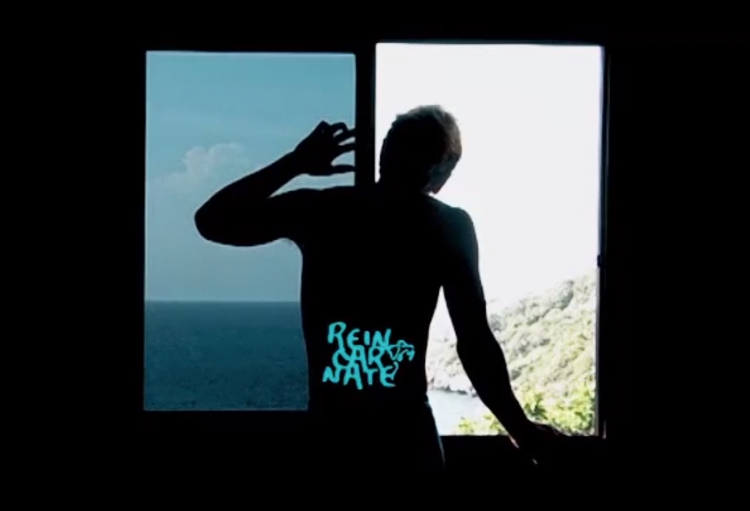
Thunska Pansittivorakul’s new film, Reincarnate (จุติ), is a fictionalised portrait of Thunska and his leading actor, Panuwat Wisessiri. Panuwat discusses the filming process with Thunska, while never breaking character, thus blurring the boundary between behind-the-scenes footage and the scenes themselves. The camera films Panuwat’s body as he sleeps, showers, and relaxes.
Thunska and Panuwat play Jenga, with the red, yellow, and blue blocks symbolising the various political groups in Thailand. (Supporters of Thaksin Shinawatra wear red shirts; their antagonists, who support the current government, wear blue shirts; anti-Thaksin monarchists wear yellow shirts.) Thunska’s film This Area Is Under Quarantine (บริเวณนี้อยู่ภายใต้การกักกัน) was more overtly political, though it was consequently banned. (His earlier films were screened at a retrospective in 2008.)
Reincarnate is arguably Thunska’s most explicit film, with a brief sequence (featuring Tharapong Buasai) which is visually similar to, and even more graphic than, his short documentary Unseen Bangkok (มหัศจรรย์กรุงเทพ). In both films, the same camera angle is used, foregrounding a particular part of the anatomy, which the director can’t resist touching. Reincarnate was intended partly as a protest against the 2009 Thai cinema ratings system, which prohibits frontal nudity amongst many other taboos; unsurprisingly, the film has not been submitted to the national ratings board.
There are some beautiful images in the film, such as Panuwat, in silhouette, framed by an open window. The film’s ending, in which Panuwat describes giving birth to a daughter, who then entices his spirit to leave his body, is deliberately ambiguous, and tonally similar to the work of Apichatpong Weerasethakul, who was a co-producer of Reincarnate.
Thunska and Panuwat play Jenga, with the red, yellow, and blue blocks symbolising the various political groups in Thailand. (Supporters of Thaksin Shinawatra wear red shirts; their antagonists, who support the current government, wear blue shirts; anti-Thaksin monarchists wear yellow shirts.) Thunska’s film This Area Is Under Quarantine (บริเวณนี้อยู่ภายใต้การกักกัน) was more overtly political, though it was consequently banned. (His earlier films were screened at a retrospective in 2008.)
Reincarnate is arguably Thunska’s most explicit film, with a brief sequence (featuring Tharapong Buasai) which is visually similar to, and even more graphic than, his short documentary Unseen Bangkok (มหัศจรรย์กรุงเทพ). In both films, the same camera angle is used, foregrounding a particular part of the anatomy, which the director can’t resist touching. Reincarnate was intended partly as a protest against the 2009 Thai cinema ratings system, which prohibits frontal nudity amongst many other taboos; unsurprisingly, the film has not been submitted to the national ratings board.
There are some beautiful images in the film, such as Panuwat, in silhouette, framed by an open window. The film’s ending, in which Panuwat describes giving birth to a daughter, who then entices his spirit to leave his body, is deliberately ambiguous, and tonally similar to the work of Apichatpong Weerasethakul, who was a co-producer of Reincarnate.
15 November 2009
7th World Film Festival of Bangkok
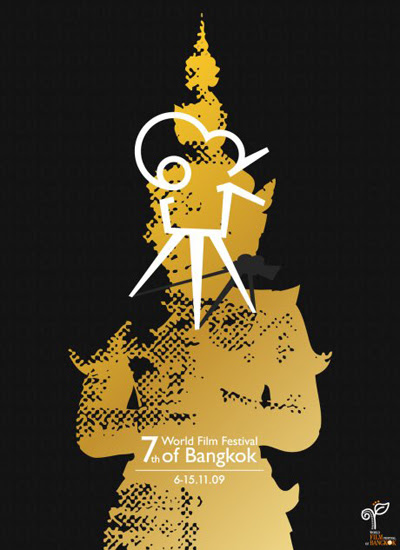
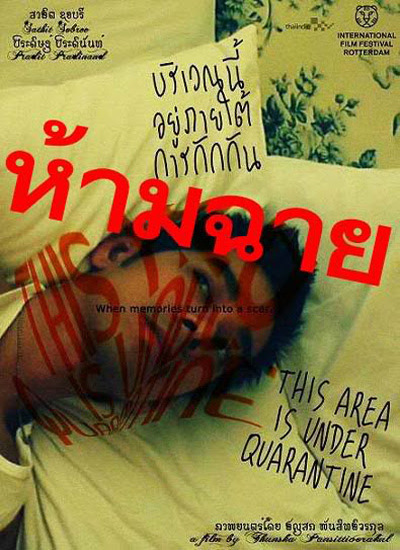
The 7th World Film Festival of Bangkok finished today, after opening on 3rd November. All screenings took place at Paragon Cineplex (the same as the 6th Festival, whereas the 5th was held at Esplanade Cineplex).
A Letter To Uncle Boonmee (จดหมายถึงลุงบุญมี), part of Apichatpong Weerasethakul’s Primitive installation, was screened on 9th and 15th November. Unfortunately, This Area Is Under Quarantine (บริเวณนี้อยู่ภายใต้การกักกัน), by Thunska Pansittivorakul, was not shown, after the Ministry of Culture refused to give it a rating. The documentary contains footage of the 2004 Tak Bai incident, taken from a VCD distributed by Same Sky (ฟ้าเดียวกัน) magazine.
A Letter To Uncle Boonmee (จดหมายถึงลุงบุญมี), part of Apichatpong Weerasethakul’s Primitive installation, was screened on 9th and 15th November. Unfortunately, This Area Is Under Quarantine (บริเวณนี้อยู่ภายใต้การกักกัน), by Thunska Pansittivorakul, was not shown, after the Ministry of Culture refused to give it a rating. The documentary contains footage of the 2004 Tak Bai incident, taken from a VCD distributed by Same Sky (ฟ้าเดียวกัน) magazine.
11 November 2009
The Remaining Signs Of Past Centuries
(Jyllands-Posten published twelve Mohammed caricatures in 2005, inspiring numerous satirical Mohammed cartoons.) Mohammed, as depicted in The Remaining Signs Of Past Centuries, appears uncensored on the covers of two books published last year: Why We Left Islam: Former Muslims Speak Out (Susan Crimp and Joel Richardson) and a reprint of Mohammed: The Prophet Of Islam (HEE Hayes).
09 November 2009
Controverses
One of the most powerful photographs is a picture of a severed hand, from a victim of the World Trade Center terrorist attack. The image (2001), by Todd Maisel, was published by only a single newspaper (New York's Daily News), while other American papers made a collective decision to avoid printing photographs of the victims. (Similarly, during World War II there was an American government ban on publication of images of dead US soldiers, though Life magazine was finally permitted to print George Strock’s photograph of three dead soldiers on 20th September 1943.)
The two Iraq wars have produced similarly controversial images (not included in the book). A photo by Ken Jarecke of an Iraqi soldier's charred body was rejected by all newspapers except The Observer (which printed it on 10th March 1991), and "a gruesome image of a young child's head split open" was the subject of much debate in the UK media before finally being printed by The Guardian (on 28th March 2003).
Arguably the most shocking picture is Kevin Carter's photograph (1993) of a vulture following a starving Sudanese child. After taking the photograph, Carter shooed the potential scavenger away, though he was later criticised for not helping the child any further.
The book includes some famously provocative images, such as Oliviero Toscani's Benetton poster showing a nun kissing a priest (1992) and Andres Serrano's Piss Christ (1987). A Robert Mapplethorpe self-portrait (1978) is included, though it's one of Mapplethorpe's less graphic images.
Several controversial photographs of naked children are featured, including a sexualised portrait by Irina Ionesco (1970) of her daughter Eva, and notorious images by Graham Ovenden (1984) and Jock Sturges (1989). Annelies Strba's Sonja In Her Bath (1985) and a portrait of Brooke Shields by Gary Gross (1975), both of which have been removed by the police from UK galleries, are also included. Nan Goldin's "Klara and Adda Belly Dancing" [sic] is mentioned though not reproduced.
A paparazzo photo of Princess Diana taken by Jacques Langevin in the moments before her car crash (1997) is included. The infamous photo of Diana receiving first aid after the crash is mentioned in the text without being reproduced.
03 November 2009
Suicide Mind
Like Pornprasert, Kosit Juntaratip is another Thai artist who uses blood in his work. Blood has also featured in two recent Bangkok exhibitions: Kristian von Hornsleth's Deep Storage Art Project, and Chen Lingyang's Twelve Flower Months (from Women In A Society Of Double-Sexuality).
Suicide Mind opened at Whitespace Gallery in Bangkok on 23rd October, and will close on 6th December. The exhibition also includes a video showing Pornprasert extracting and painting with blood.
02 November 2009
European Union Film Festival 2009
The 2007 festival also featured an outstanding Romanian film, Four Months, Three Weeks, & Two Days. Both of these films have also been screened at Chulalongkorn University's International Film Festival: Four Months, Three Weeks, & Two Days in 2008, and California Dreamin' at the 2008-2009 event.
01 November 2009
ภาพยนตร์ศรีศาลายา
Art & Words
31 October 2009
Screamfest
30 October 2009
Pop Life:
Art in a Material World
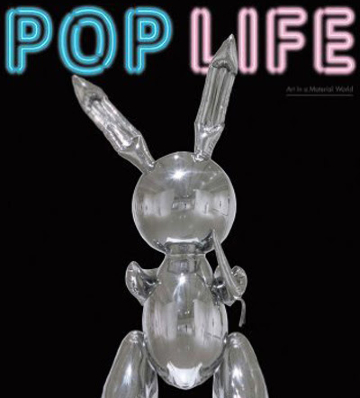
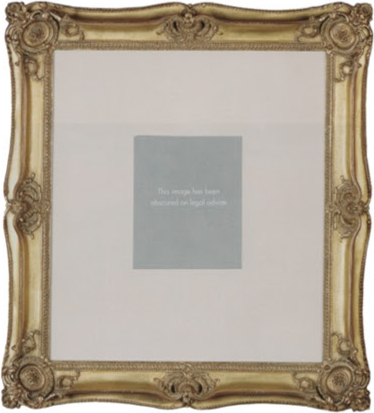
The catalogue for Tate Modern’s current exhibition Pop Life: Art in a Material World has been deemed illegal by the Metropolitan Police Service. The Met ordered the removal of Richard Prince’s photograph Spiritual America on the day before the exhibition opened, and the Tate withdrew the catalogue from sale while it sought legal advice.
In a letter to the Tate, the Met confirmed that Spiritual America is “a level 1 indecent image of a child. The possession and distribution of which are criminal offences.” They also cautioned that the catalogue could not be legally sold uncensored: “if the book were to be distributed in its original form (i.e. with the picture of Brooke Shields in it) an offence would be committed under the Protection of Children Act 1978.”
This makes the catalogue one of the few commercially published books that are illegal to possess in the UK. Other titles on this list could conceivably include I last och lust: sexuella bilder förr och nu (‘in vice and lust: sexual images past and present’), by Swedish anti-pornography campaigner Hans Nestius; and William Powell’s The Anarchist Cookbook, which has been cited in several trials of terrorists and other extremists.
In his catalogue essay, Jack Bankowsky acknowledges that Shields was “decidedly underage” and that “Prince invites us to ogle Brooke Shields in her prepubescent nakedness”. To avoid prosecution, a sticker has now been placed over the offending photograph: “This image has been obscured on legal advice” (p. 123).
The catalogue itself, edited by Bankowsky, Alison M. Gingeras, and Catherine Wood, is an excellent exploration of artists, such as Andy Warhol, who “engaged with mass media and the market and cultivated artistic personas”. Scott Rothkopf’s essay on Jeff Koons’ Made in Heaven series is a particular highlight. There is also an extensive bibliography.
In a letter to the Tate, the Met confirmed that Spiritual America is “a level 1 indecent image of a child. The possession and distribution of which are criminal offences.” They also cautioned that the catalogue could not be legally sold uncensored: “if the book were to be distributed in its original form (i.e. with the picture of Brooke Shields in it) an offence would be committed under the Protection of Children Act 1978.”
This makes the catalogue one of the few commercially published books that are illegal to possess in the UK. Other titles on this list could conceivably include I last och lust: sexuella bilder förr och nu (‘in vice and lust: sexual images past and present’), by Swedish anti-pornography campaigner Hans Nestius; and William Powell’s The Anarchist Cookbook, which has been cited in several trials of terrorists and other extremists.
In his catalogue essay, Jack Bankowsky acknowledges that Shields was “decidedly underage” and that “Prince invites us to ogle Brooke Shields in her prepubescent nakedness”. To avoid prosecution, a sticker has now been placed over the offending photograph: “This image has been obscured on legal advice” (p. 123).
The catalogue itself, edited by Bankowsky, Alison M. Gingeras, and Catherine Wood, is an excellent exploration of artists, such as Andy Warhol, who “engaged with mass media and the market and cultivated artistic personas”. Scott Rothkopf’s essay on Jeff Koons’ Made in Heaven series is a particular highlight. There is also an extensive bibliography.
Artificial Intelligence
AI was originally conceived by Kubrick, who worked with Brian Aldiss on a treatment and screenplay based on Super-Toys Last All Summer Long, a short story by Aldiss. Kubrick subsequently collaborated with Bob Shaw, Ian Watson, and Sara Maitland on revised versions of the script, and production was scheduled to start in 1999 after the completion of Kubrick's Eyes Wide Shut.
After Kubrick's death during post-production of Eyes Wide Shut, Spielberg took over the project and wrote a new screenplay based on Kubrick's notes. The film, directed by Spielberg, was released in 2001. (I've always regarded AI as a misguided homage to Kubrick with a syrupy Spielbergian ending.)
The book features a foreword by Spielberg which gives a brief summary of his friendship with Kubrick. (Spielberg was more forthcoming in an interview for the Channel 5 documentary Steven & Stanley in 2001.) There is an account of AI's pre-production by Struthers, who works with the Kubrick Archive, though it glosses over Kubrick's 'creative differences' with his various script collaborators. (Frank interviews with Aldiss and Maitland are featured in the Channel 4 documentary The Last Movie from 1999.)
29 October 2009
El Pais
28 October 2009
Drag Me To Hell
The plot, in which a curse is placed on a bank employee, provides plenty of gory set-pieces, though the tone is always tongue-in-cheek rather than truly horrific. (A director's cut, more violent than the theatrical version, has also been released.) All hell breaks loose for the final confrontation with the demon, and this scene includes a great moment in which a goat becomes possessed. The last-minute twist is actually revealed on the film's poster.
